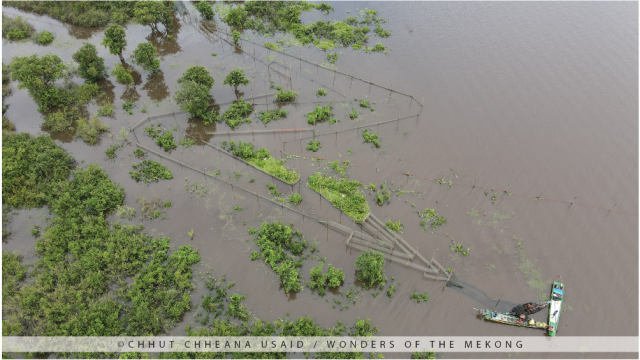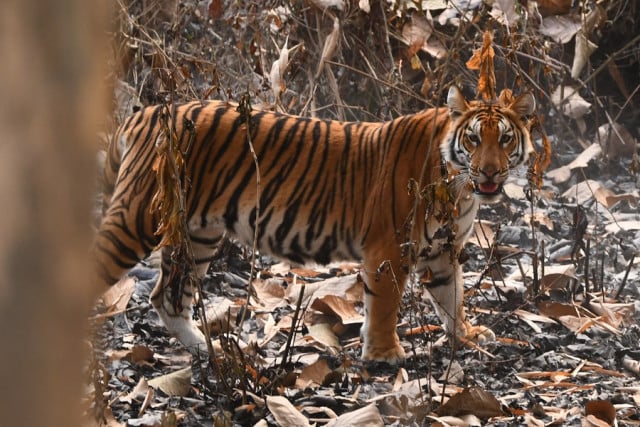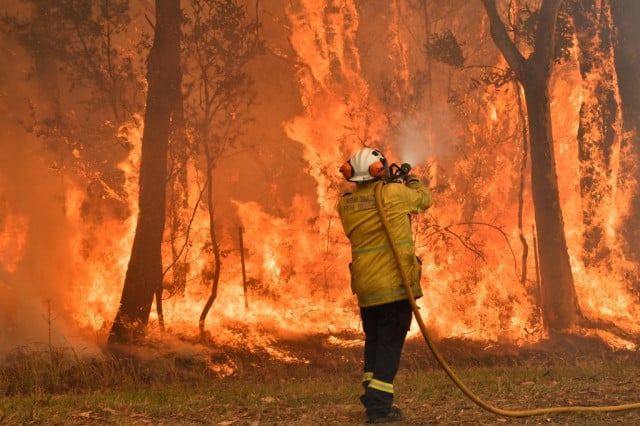Loss of Flooded Forests Surrounding the Tonle Sap Lake Results in Fish Decline

- By Cambodianess
- June 4, 2021 6:35 PM
The Tonle Sap Lake is the beating heart of Cambodia, the largest freshwater lake in Southeast Asia, and one of the most productive and biodiverse wetlands in the world.
The flooded forests and floodplains that surround the lake provide shelter and food for many migrating and resident fish species.
The flooded forest is also a prime area for livelihood activities, as seen in these aerial view photographs, where arrow-shaped fishing traps and farmlands have been created within the flooded forests that surround the Tonle Sap Lake.
Unfortunately, the Tonle Sap Lake is continually under threat from natural and human-created factors. Since 2015, a lack of rain due to El Niño conditions and the operation of dams on the Mekong River have contributed to severely low water levels in the Tonle Sap Lake. Low water levels and dry conditions are then exacerbated by climate change, most notably by the increase and consistency of extreme heat and drought.

In recent years, these conditions fueled flooded forest fires throughout the region. While some fires occur from natural fires, like lightning strikes, humans also contribute to the problem. Some forest fires are started accidentally by people burning grass or firewood to make smoke for harvesting honey. People also accidentally start fires by throwing cigarette buds on dried leaves or grasses or not properly extinguishing cooking fires. Even more concerning, some forest fires are set intentionally, when people cut and burn down flooded forests to clear the area and convert it into farmland. Some also use deforestation to claim land ownership.
All of these factors, both from nature and humans, contribute to the loss of flooded forests that are an important refuge and nursery habitat for fish. This compounds the threats that endanger the fish populations in the Tonle Sap Lake. In addition, overfishing and destructive fishing practices are serious contributors to declining fish populations. It is common for fishers to set long arrow-shaped traps (Lob Lok) that completely block river channels and catch many fish in the process. Unfortunately, in order to set the traps, some of the trees on the border of the forest have to be cut down and sometimes even more trees are cut down to be used as poles to stabilize the trap.
The use of illegal fishing gears is also common, most of which target a large variety of fish including the more vulnerable species. Unless practices are changed, the loss of flooded forest habitat, damaging fishing practices, and use of illegal fishing gear could all contribute to rapid fish population decline in the Tonle Sap Lake and the Mekong River.
Wonders of the Mekong urges fishers and people living near the Tonle Sap Lake to be mindful about how their actions can endanger the flooded forests and the fish that live there. Let's join together and help sustain the flooded forests to protect fish populations and keep the Tonle Sap Lake and Mekong River healthy.
By Chhut Chheana/ USAID Wonders of the Mekong















